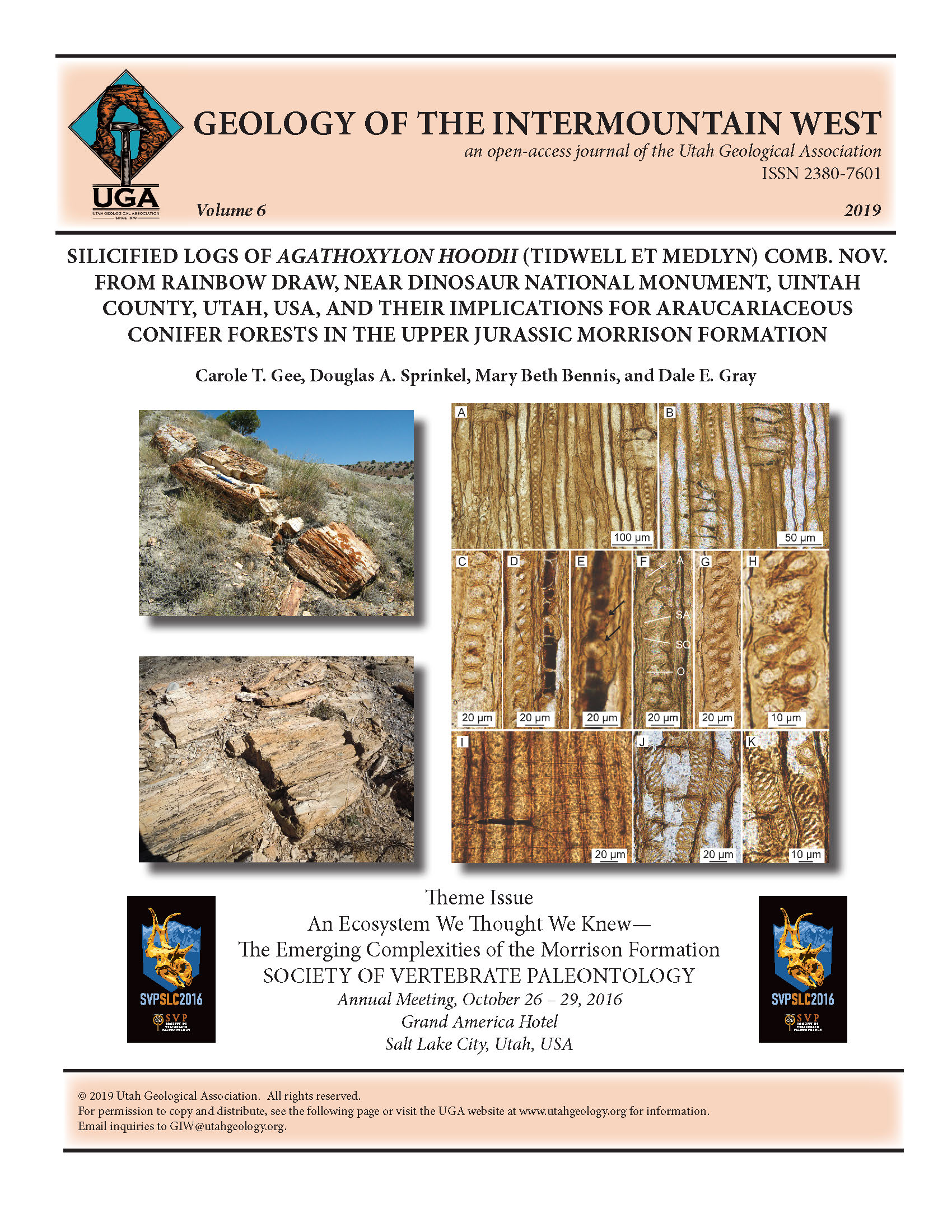Silicified logs of Agathoxylon hoodii (Tidwell et Medlyn) comb. nov. from Rainbow Draw, near Dinosaur National Monument, Uintah County, Utah, USA, and their implications for araucariaceous conifer forests in the Upper Jurassic Morrison Formation
Abstract
A new local flora of silicified logs and wood has been discovered in the Upper Jurassic Morrison Formation in the Rainbow Draw area near Dinosaur National Monument, northeastern Utah, USA. Fossil logs and wood were found in the Salt Wash Member at nine sites at Rainbow Draw and at one site near Miners Draw, south of Blue Mountain. The fossil logs are large and relatively intact, the longest measuring 11 m. The wood is well preserved, coniferous, and can be identified to the species level. Diagnostic anatomical features include resin plugs in the ray cells and axial tracheids, araucarioid tracheary pitting and crossfield pitting, and the lack of resin canals and true, regularly occurring growth rings. This taxon of fossil wood, originally described as Araucarioxylon hoodii Tidwell et Medlyn, is recognized here as a new combination, Agathoxylon hoodii (Tidwell et Medlyn) Gee, Sprinkel, Bennis et Gray, which pertains to the conifer family Araucariaceae. Based on the preserved girth of the logs, the minimum height of the trees could be reconstructed. The largest fossil logs measured at least 127 cm in diameter and hence reached a minimum height of 28 m. Judging from the growth habit of all naturally occurring araucariaceous trees today, the fossil plants likely formed forests of moderately tall trees and were well over 100 years old. The lack of true growth rings shows that there was no seasonality in the local paleoclimate, neither variations in summer–winter temperatures, nor wet–dry cycles. Thus, during the Late Jurassic, tall conifer forests with Agathoxylon hoodii grew in at least two areas in what is now Utah: east of the city of Vernal and near Mt. Ellen in the Henry Mountains. Coupled with the fossil evidence of conifer seed cones and pollen found in the Morrison Formation throughout eastern Utah, the newly discovered fossil logs and wood argue for the reconstruction of Upper Jurassic habitats in this region as mesic and wooded, and the climate as equable, not seasonal, nor semi-arid or arid.

Copyright (c) 2019 Utah Geological Association

This work is licensed under a Creative Commons Attribution 4.0 International License.




